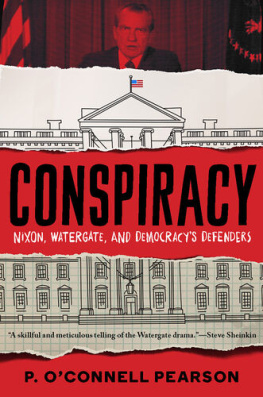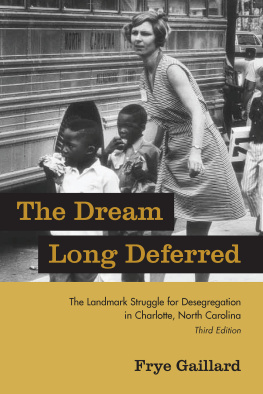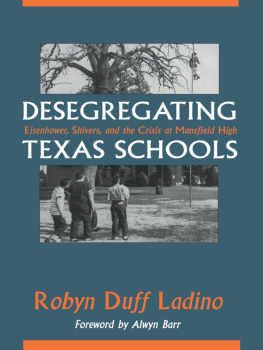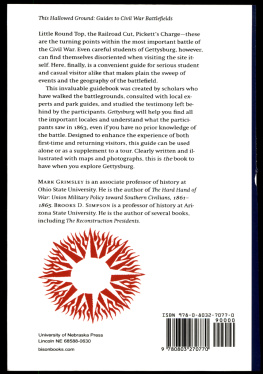H OW I S HED M Y S KIN
Unlearning the Racist Lessons of a Southern Childhood
JIM GRIMSLEY

ALGONQUIN BOOKS OF CHAPEL HILL 2016
Also by Jim Grimsley
Winter Birds
Dream Boy
My Drowning
Mr. Universe and Other Plays
Comfort and Joy
Boulevard
Jesus Is Sending YouThis Message
For the Jones Senior High School Class of 1973
Contents
Acknowledgments
IN WRITING THIS BOOK I am mindful that the real people from whom this story is drawn were my neighbors and friends for the first two decades of my life. I have changed the proper names in the story to preserve their privacy, though I have not changed place names or names that appear in the historical recordone example being the list of old family names from Jones County.
I have altered none of the incidents in the book, or if I have done so, it is the fault of fading memory. While these years of my life are distant, they remain vivid and present in my mind, in some ways more so than events that are more recent. Conviction that ones memory is correct means little, of course. But my aim is to tell a story that is largely my own, and I believe I have come close to the truth. I am tracing the ways in which the events of these years shaped my thinking about skin color and difference. The memory of that process has not faded.
While I have made this point in the narrative, it bears repeating that the conversations I have written are all reconstructions; I do not remember exact dialogue from fifty years ago. I have strong memories of what we spoke about as children and teenagers and believe I have presented faithful substitutes. In the cases where these little dramas recreate specific memories, they are likely to be close to the original. They are certainly as close as I can come.
To many people, I owe thanks for their help in this process, among them my family, who have once again allowed me to reach into our past and write about it. My editor, Charles Adams, and my former editor and present publisher, Elisabeth Scharlatt, have brought this story back into the Algonquin family, and I am deeply grateful for that. My former agent, Peter Hagan, helped me with this book in its early iterations, and my present agent, Melanie Jackson, has been an equally valuable voice in the final stages of its shaping. At the University of North Carolina at Chapel Hill, the staff of the Wilson Librarys North Carolina Collection provided assistance in my research of the history of Jones County. The North Carolina Collection and Special Collections of the Joyner Library at East Carolina University helped me to understand the history of school integration in that region, and also provided me with microfiche access to the newspapers from Kinston and New Bern that helped to jog my memory about the years of demonstrations and walkouts at our high school. Margaret Bauer provided me with moral support and free housing in Greenville while I worked at the Joyner Library in the summer of 2013, a span of weeks that reminded me what the heat of eastern North Carolina can be like. Lynna Williams, Roxanne Henderson, Elisabeth Corley, and Kathie de Nobriga helped with early readings of the book. My colleagues at Emory University, and the institution itself, have provided the steady support on which I have come to rely.
I owe a great debt to the people of Jones County, both fifty years ago and today. Even then it was a community that was extraordinary for its closeness and caring, though it was, of course, full of the pettiness and imperfections that plague all human places. As a part of the writing of this book, I renewed contact with a number of old friends from high school days, and I would like to list them all. But since these are people whose names I have altered in the text, citing their real names among these acknowledgments would be inappropriate.
An early version of the first chapter appeared in Foster Dicksons anthology Children of the Changing South (McFarland, 2011); I am grateful for the encouragement that this provided.
While I have done a good deal of reading on various topics related to the subject of integration, there are relatively few facts in the book for which I have cited sources. In general, I have used my background reading as just that, and have limited the text to what I remember and knew at the time. One notable exception is the material concerning lynchings that I have included in the final chapter; information about these public spectacles of mob murder are drawn from Vann R. Newkirks Lynching in North Carolina (McFarland, 2008).
At our worst we are creatures who tear at each other, feed on each other, abuse each other; at our best we are unspeakably sublime. My awe at the dreadful aspect of the human is unceasing even as I age and look beyond it to the awful dreadfulness of the universe into which I shall dissolve. When I was seventeen and headed to college, I was certain I already knew nearly everything I needed to know. I have told this story in order to reclaim some of the feeling I had in those days, including my optimism that the world could change for the better. Now I am old enough to know that I know almost nothing. While the world changes, it also stays the same, fixed by the past. Much is different between the races in the South of the third millennium, but the old ways remain side by side with the new.
BIAS
Freedom of Choice / Black Bitch
On a day in late August 1966, my little village woke to the fading edge of summer and the beginning of a new school year. A quiet dawn betrayed scarcely any sign of agitation within the placid houses, grouped under pecan or oak or elm trees, taking comfort in the shade even at that early hour, already touched with the beginnings of heat. On the main highway through town a single stoplight shuttered through its changes from red to yellow to green. The lone restaurant opened a bit past dawn to serve country breakfast to truckers and travelers and locals. Post-office workers arrived to sort mail, one or two storekeepers opened their doors, and the owner of the Trent Motel shuffled check-in forms at the front desk while the neon VACANCY sign glowed in the window.
Beyond main street under the ranks of trees wakened the rest of the village, black residents in the rows of houses we called Back Streets, white residents in the houses we thought of as Pollocksville proper, the real place, the real world. Outside the town limits, scattered among the fields and forests of Jones County, farmers were already abroad in the early morning, continuing the tobacco harvest, readying the cured, golden leaves for market. A couple of miles from town, a clerk opened the local Alcoholic Beverage Control store, collapsing the iron security barrier against the walls, stepping behind his long counter, shelves of liquor bunched behind him in the small space. In North Carolina, liquor could be sold legally only in ABC stores, and ours was located outside of the village, decently separate from our homes and churches.
Down the highway, closer to the old Methodist church, Mrs. Willa Romley opened her fish market. At another busy intersection, Mr. Paul Arnett unlocked his thriving store on the route to the beaches. Across the county, school bus drivers, all of them students at the high school, swept their buses and started their engines. The first of the teachers arrived to inspect the classrooms.
I had begun my morning, too, slipping out of bed, skinny and pale, my white jockey shorts, my hairless body, all of me destined to begin sixth grade that morning. What I felt was mostly sadness that the free days of summer break were over. I dressed in stiff new clothes in the bedroom I shared with my brothers, new jeans and a short-sleeved shirt, a plaid that I liked, the starchy smell like a perfume in my nostrils. The night before I had carefully removed the tags, pins, and excess labels from my jeans and shirt, from my new socks and belt. New shoes made a bit of a squeaking sound as I stepped to the window to look out at the side yard. At eleven, I was in a brooding state, in my third year as a baptized Christian and member of the Pollocksville Baptist Church, attempting to resolve a belief in God with the world as I understood it from the novels of Robert A. Heinlein, P. L. Travers, Madeleine LEngle, and Edgar Rice Burroughs. My life for the summer had revolved around Vacation Bible School, reruns of










